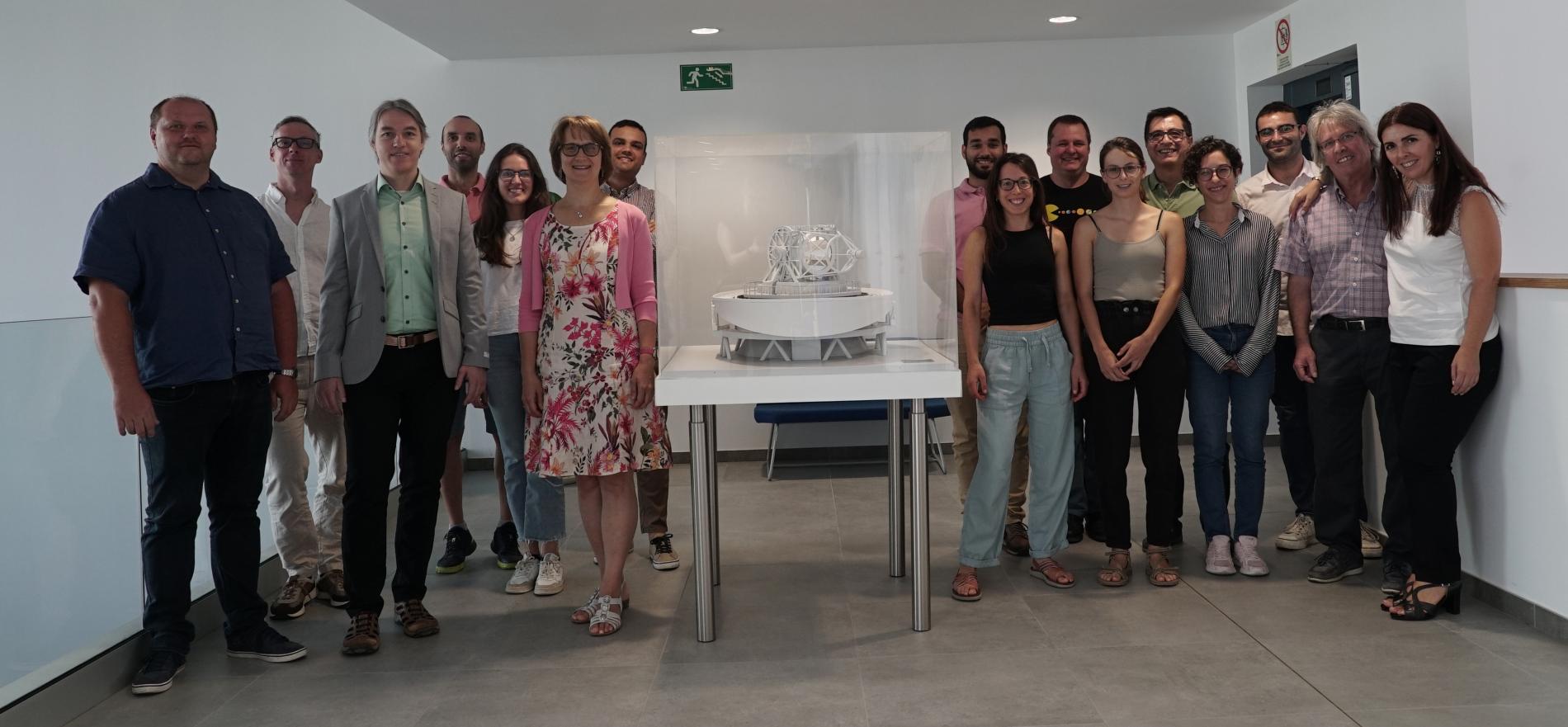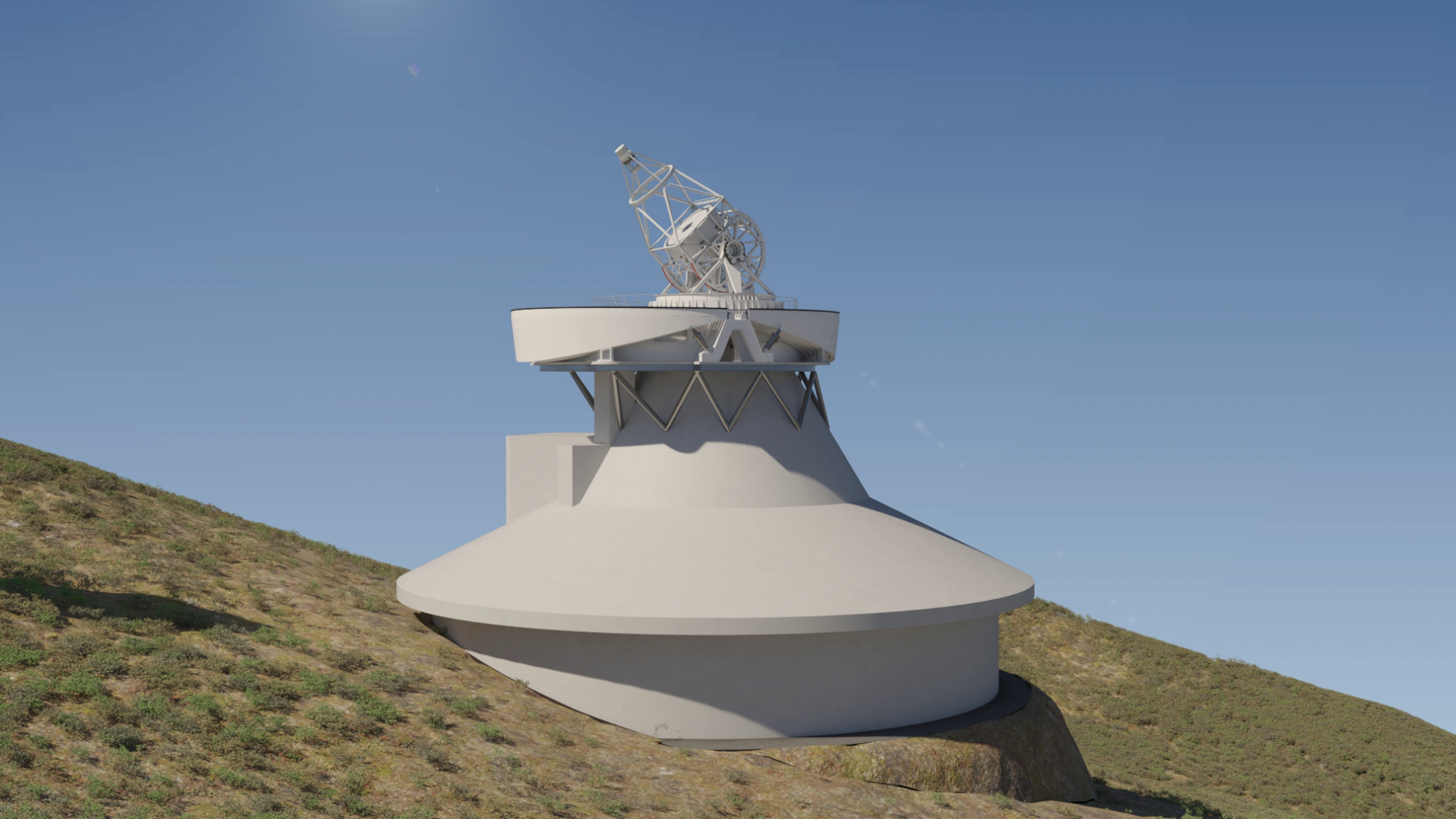The IAA-CSIC and the IAC participate in the creation of the European Solar Telescope Canary Foundation
Nine institutions from seven European countries have today signed the deeds of this entity, which paves the way for the future construction of the European Solar Telescope (EST). One of the main goals of EST is to improve our understanding of the Sun by observing its magnetic fields in unprecedented detail
Representatives of nine institutions from seven European countries, including the Higher Council for Scientific Research (CSIC) and the Instituto de Astrofísica de Canarias (IAC), have signed this morning in Santa Cruz de Tenerife the deeds of the European Solar Telescope Canary Foundation. The agreement gives legal status to the project consortium and paves the way for the construction of the European Solar Telescope (EST) at the El Roque de los Muchachos Observatory, located on the Canary Island of La Palma.
The institutions responsible for the creation of the entity that will guide the project towards the construction phase belong to: Germany, Slovakia, Spain, the Czech Republic, Sweden, Switzerland and the United Kingdom. Spain is present in EST through the Instituto de Astrofísica de Canarias (IAC), which coordinates the project at the global level, and the Institute of Astrophysics of Andalusia (IAA-CSIC). The design of the telescope and part of its instrumentation, the coordination of the international consortium and the creation of the EST communication office are some of the contributions that these institutions have made to the project since its inception in 2008. Both have been part of its scientific advisory committee since then.

The preliminary design phase of the telescope, partially funded by the European Commission's Horizon 2020 programme and the Government of the Canary Islands, has recently been completed. Now the creation of the EST Foundation marks a crucial milestone in the project's progress towards the construction phase. One of its main objectives is to create the European EST Research Infrastructure Consortium (ERIC), which will bring together the national ministries of the partner countries. ERIC EST will be the legal entity responsible for overseeing all aspects of the construction and operation of this major scientific infrastructure.
The membership of the IAA-CSIC and IAC in the EST Foundation gives the two institutions decision-making power over the future scientific, technological and industrial aspects of the project.
AN UNPRECEDENTED TECHNOLOGICAL CHALLENGE
EST will become the largest solar telescope ever built in Europe. With a 4.2-metre primary mirror, state-of-the-art technology and specialised instruments, EST will provide astronomers with an unrivalled tool for observing the Sun. The telescope will be built at the Roque de los Muchachos Observatory on the island of La Palma, recognised worldwide as one of the best places for astronomical observation.
The European Solar Telescope was included in 2016 in the roadmap of the European Strategy Forum on Research Infrastructures (ESFRI), which recognises it as a strategic scientific infrastructure for Europe. One of its main goals is to improve our understanding of the Sun by observing its magnetic fields in unprecedented detail.

EST will uncover signals currently hidden in the noise and reveal the existence of tiny, hitherto unknown magnetic structures. By studying the magnetic and dynamical coupling of the solar atmosphere, the telescope will provide valuable insights into the mechanisms underlying solar flares and coronal mass ejections. These phenomena determine the so-called space weather, which has a strong influence on our highly technological society.
Both the optical configuration and the instrumentation of EST are meticulously designed to capture the interactions between the different atmospheric layers of the Sun. Its instruments will allow simultaneous observations at multiple wavelengths. This unique capability gives it a higher efficiency compared to existing or future ground-based or space-based telescopes.
The construction of Europe's largest solar telescope is a technological challenge that, once completed, will position Europe as a leading reference in solar physics research and the development of scientific instrumentation.
Instituto de Astrofísica de Andalucía (IAA-CSIC)
Unidad de Divulgación y Comunicación
Silbia López de Lacalle - sll[arroba]iaa.es - 958230676
https://www.iaa.csic.es
https://divulgacion.iaa.csic.es

